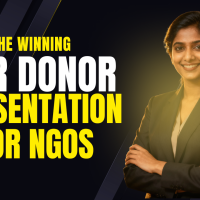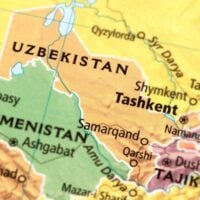Deadline: 1 August 2019
The European Union (EU) is currently inviting eligible organizations for its “Civil Society Organisations (CSOs) in-country call for proposals for Uganda 2018 – 2019”.
Objectives
- The global objective of this call for proposals is to enable Civil Society Organisations (CSOs) to engage as actors of governance and development in Uganda.
- The specific objectives of this call for proposals are:
Program Lots
The program is divided into three lots:
- Lot I: Promoting youth employment opportunities and agency
- Lot II: Promoting sound and transparent governance of Uganda’s natural resources
- Lot III: Enhancing the capacity of the media in development
Priorities
The priorities for this call are for projects that are:
- submitted by a local organization as lead applicant in order to promote ownership and local leadership
- implemented by local applicants and/ or have local actors at the heart of the project
- include elements of capacity development for local stakeholders
- using a rights-based approach and are gender sensitive.
Size of Grants
Any grant requested under this call for proposals must fall between the following minimum and maximum amounts:
- minimum amount: EUR 300,000.00
- maximum amount: EUR 450,000.00
Eligibility Criteria
- Lead applicant
- In order to be eligible for a grant, the lead applicant must:
- be a legal person and
- be non-profit-making and
- be directly responsible for the preparation and management of the action with the co-applicant(s) and affiliated entity(ies), not acting as an intermediary.
- be a Civil Society Organisation and
- be established in Uganda or in a one of the following countries:
- countries eligible for Union funding under the European Neighbourhood Instrument established by Regulation (EU) No 232/2014 of the European Parliament and of the Council (the ‘European Neighbourhood Instrument’) including the Russian Federation;
- developing countries and territories, as included in the list of ODA recipients published by the OECD-DAC (‘list of ODA recipients’), and overseas countries and territories covered by Council Decision 2013/755/EU;
- countries eligible for the European Development Fund;
- Member States, beneficiaries listed in Annex I to Regulation (EU) No 231/2014, and contracting parties to the Agreement on the European Economic Area
- However, where the lead applicant is not established in Uganda, it must act with minimum one co-applicant established in Uganda.
- In order to be eligible for a grant, the lead applicant must:
- Co-applicant(s)
- For actions presented by a European or other non-Ugandan actor, a partnership with a local actor is obligatory and projects shall respond to an initiative emanating from the local partner in Uganda and ensure their involvement during all the stages of the action implementation. Additionally, non-Ugandan applicants which propose an action must demonstrate an established and effective partnership with local organisations in the partner countries where the actions are taking place.
- Co-applicants participate in designing and implementing the action, and the costs they incur are eligible in the same way as those incurred by the lead applicant.
- Affiliated entities
- The lead applicant and its co-applicant(s) may act with affiliated entity(ies).
- Only the following entities may be considered as affiliated entities to the lead applicant and/or to co-applicant(s):
- Only entities having a structural link with the applicants (i.e. the lead applicant or a co-applicant), in particular a legal or capital link.
- This structural link encompasses mainly two notions:
- Control, as defined in Directive 2013/34/EU on the annual financial statements, consolidated financial statements and related reports of certain types of undertakings:
- Entities affiliated to an applicant may hence be:
- Entities directly or indirectly controlled by the applicant (daughter companies or first-tier subsidiaries). They may also be entities controlled by an entity controlled by the applicant (granddaughter companies or second-tier subsidiaries) and the same applies to further tiers of control;
- Entities directly or indirectly controlling the applicant(parent companies). Likewise, they may be entities controlling an entity controlling the applicant;
- Entities under the same direct or indirect control as the applicant (sister companies).
- Entities affiliated to an applicant may hence be:
- Membership, i.e. the applicant is legally defined as a e.g. network, federation, association in which the proposed affiliated entities also participate or the applicant participates in the same entity (e.g. network, federation, association) as the proposed affiliated entities.
- Control, as defined in Directive 2013/34/EU on the annual financial statements, consolidated financial statements and related reports of certain types of undertakings:
How to Apply
- The application procedure consists of two phases:
- Concept notes
- Full applications
- The concept note together with the declaration by the lead applicant must be submitted at the address given on the website.
For more information, please visit https://bit.ly/2ZV5Cz6 and download the guidelines.









































